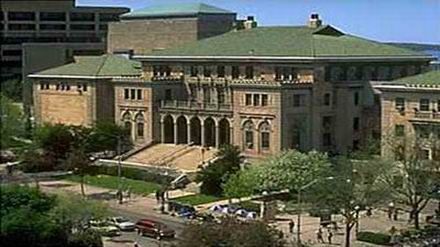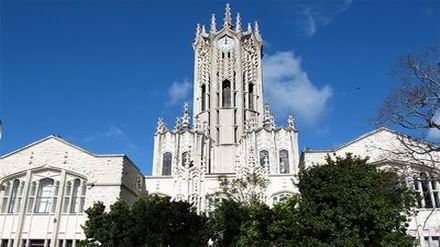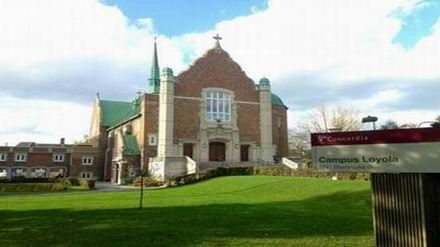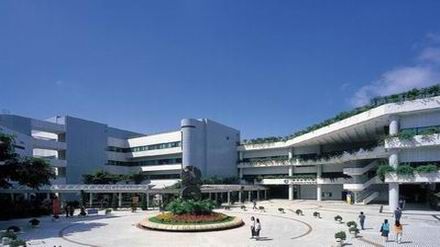第一篇
行星的形成
有一篇讲行星怎样形成的,建议大家看看相关内容,满难的。阅读只记得一个讲行星的文章介绍几个行星:木星、土星??说很大一部分的比例都是水和冰
版本二
太阳系的形成
1 原材料:成分:大部分为helium和XXX,小部分为常见的固态和气态分子
2 形成过程:某爆发形成碰撞,导致了引力和rotation。关于rotation,用ice-skater打比方
3 类地行星:成为主要为固态。
4 远日行星:重力能产生热能,导致温度上升。随着太阳形成,形成过程停止(大意),温度下降,冰得以存在,所以密度小。而体积大导致引力强,可吸引更轻的气态分子。
第二篇
这篇讲贸?的。貌似?中世纪欧洲吧,商人为?生存都结成团伙?。统一团伙内的产品质量,培养学徒。但是它的主要目的呢(有题),还是抵制非团伙成员非竞争,因此也必须与政府有?系。非团伙成员也有优势的,产品价格低(有题),而且可以雇佣农工,很?宜啦!最后一段?,但是这种团伙内部的公平呢,其实只是??上的(有题),能?啊,雄心啊,都会导致团伙成员中一部分有钱,一部分没钱,有钱的就扩张,没钱的就抗议要公平啊!(排序题)
欧洲中世纪?会制? Guild
先讲大师傅 master 的出道过程。然后是整个?会的排他性。接着是?会和城邦政府怎么样由前提相互支持(?断),到后?政府看中?断的大面包,于是插手进?分一杯羹。除?政府以外,?会的另一个强劲对手是城外?受法?约束而且拥有?价?动?(农民工)的个体企业。后??会竞争。?过,成本拼?过,价格当然也拼?过,同时又遇到一些供应上的困难,所以结果。。。还有,他们自己本身也有矛盾,主要是 master 们有些很有野心,想要扩张。所以简单?就是内忧外患。
版本二:
中世纪行会
1 目的:主要---经济稳定性和排他性;次要---将门徒训练为大师,高质量,统一标准的商品。
2 问题:内忧外患:内---master数量太多,外---其他城市的商人竞争。其竞争力来自更低的价格和利用乡村廉价劳动力。同时政府难以管理城市外的竞争者。
3 影响:独立性和自制性受到威胁。商人行会和手工业者行会(不确定)
第三篇:贸易的发展
Bartering 和states的关系
1 barter建立在复杂的社会和政治机构上(好像提及了一个19C70S的研究发现)
2 假说一:有R提出,农业和交通等的发展,使得长距离的物物交换成为可能。奢侈品也参与到这样的交换中来。同时需要世俗君主的介入。
反驳:XXX在那个时候还没出现。
3 假说二:由另一个R提出,以maya为例(不确定)。他们缺少某些重要资源,所以必须和周边环境交换。而且他们的communities都面对这种问题,所以必须和周边的其他地区进行交换。一旦这种交换成为常态,就需要政府的规范。
反驳:可能是其他原因导致了政府的行为
4 结论:商业或经济因素不可能是states形成的唯一原因。很多因素影响着政治。甚至机经本身就是某种政治条件下的结果,而非原因。
扩展阅读:
TOPIC Formation of Planets[ http://en.wikipedia.org/wiki/Formation_and_evolution_of_the_Solar_System]
The various planets are thought to have formed from the solar nebula, the disc-shaped cloud of gas and dust left over from the Sun's formation.[ Douglas N. C. Lin (May 2008). "The Genesis of Planets". Scientific American 298 (5): 50-59.] The currently accepted method by which the planets formed is known as accretion, in which the planets began as dust grains in orbit around the central protostar. Through direct contact, these grains formed into clumps up to 200 metres in diameter, which in turn collided to form larger bodies (planetesimals) of ~10 kilometres (km) in size. These gradually increased through further collisions, growing at the rate of centimetres per year over the course of the next few million years.
The inner Solar System, the region of the Solar System inside 4 AU, was too warm for volatile molecules like water and methane to condense, so the planetesimals that formed there could only form from compounds with high melting points, such as metals (like iron, nickel, and aluminium) and rocky silicates. These rocky bodies would become the terrestrial planets (Mercury, Venus, Earth, and Mars). These compounds are quite rare in the universe, comprising only 0.6% of the mass of the nebula, so the terrestrial planets could not grow very large. The terrestrial embryos grew to about 0.05 Earth masses and ceased accumulating matter about 100,000 years after the formation of the Sun; subsequent collisions and mergers between these planet-sized bodies allowed terrestrial planets to grow to their present sizes.
When the terrestrial planets were forming, they remained immersed in a disk of gas and dust. The gas was partially supported by pressure and so did not orbit the Sun as rapidly as the planets. The resulting drag caused a transfer of angular momentum, and as a result the planets gradually migrated to new orbits. Models show that temperature variations in the disk governed this rate of migration, but the net trend was for the inner planets to migrate inward as the disk dissipated, leaving the planets in their current orbits.[ Staff. "How Earth Survived Birth". Astrobiology Magazine. Retrieved 2010-02-04.]
The gas giants (Jupiter, Saturn, Uranus, and Neptune) formed further out, beyond the frost line, the point between the orbits of Mars and Jupiter where the material is cool enough for volatile icy compounds to remain solid. The ices that formed the Jovian planets were more abundant than the metals and silicates that formed the terrestrial planets, allowing the Jovian planets to grow massive enough to capture hydrogen and helium, the lightest and most abundant elements.[ Ann Zabludoff (University of Arizona) (Spring 2003). "Lecture 13: The Nebular Theory of the origin of the Solar System". Retrieved 2006-12-27.] Planetesimals beyond the frost line accumulated up to four Earth masses within about 3 million years. Today, the four gas giants comprise just under 99% of all the mass orbiting the Sun. Theorists believe it is no accident that Jupiter lies just beyond the frost line. Because the frost line accumulated large amounts of water via evaporation from infalling icy material, it created a region of lower pressure that increased the speed of orbiting dust particles and halted their motion toward the Sun. In effect, the frost line acted as a barrier that caused material to accumulate rapidly at ~5 AU from the Sun. This excess material coalesced into a large embryo of about 10 Earth masses, which then began to grow rapidly by swallowing hydrogen from the surrounding disc, reaching 150 Earth masses in only another 1000 years and finally topping out at 318 Earth masses. Saturn may owe its substantially lower mass simply to having formed a few million years after Jupiter, when there was less gas available to consume.
T Tauri stars like the young Sun have far stronger stellar winds than more stable, older stars. Uranus and Neptune are thought to have formed after Jupiter and Saturn did, when the strong solar wind had blown away much of the disc material. As a result, the planets accumulated little hydrogen and helium-not more than 1 Earth mass each. Uranus and Neptune are sometimes referred to as failed cores.[ E. W. Thommes, M. J. Duncan, H. F. Levison (2002). "The Formation of Uranus and Neptune among Jupiter and Saturn". Astronomical Journal 123 (5): 2862.] The main problem with formation theories for these planets is the timescale of their formation. At the current locations it would have taken a hundred million years for their cores to accrete. This means that Uranus and Neptune probably formed closer to the Sun-near or even between Jupiter and Saturn-and later migrated outward (see Planetary migration below).[ Harold F. Levison, Alessandro Morbidelli, Crista Van Laerhoven et al. (2007). "Origin of the Structure of the Kuiper Belt during a Dynamical Instability in the Orbits of Uranus and Neptune". Icarus 196 (1): 258.] Motion in the planetesimal era was not all inward toward the Sun; the Stardust sample return from Comet Wild 2 has suggested that materials from the early formation of the Solar System migrated from the warmer inner Solar System to the region of the Kuiper belt.[ Emily Lakdawalla (2006). "Stardust Results in a Nutshell: The Solar Nebula was Like a Blender". The Planetary Society. Retrieved 2007-01-02.]
Based on recent computer model studies, the complex organic molecules necessary for life may have formed in the protoplanetary disk of dust grains surrounding the Sun before the formation of the Earth. According to the computer studies, this same process may also occur around other stars that acquire planets.[ Moskowitz, Clara (29 March 2012). "Life's Building Blocks May Have Formed in Dust Around Young Sun". Space.com. Retrieved 30 March 2012.]
After between three and ten million years, the young Sun's solar wind would have cleared away all the gas and dust in the protoplanetary disc, blowing it into interstellar space, thus ending the growth of the planets.[ B. G. Elmegreen (1979). "On the disruption of a protoplanetary disc nebula by a T Tauri like solar wind". Astronomy & Astrophysics 80: 77.][ Heng Hao (24 November 2004). "Disc-Protoplanet interactions". Harvard University. Retrieved 2006-11-19.]
TOPIC 中世纪商人行会
Merchant Guilds in the Middle Ages[ http://www.middle-ages.org.uk/merchant-guilds-in-the-middle-ages.htm]
The guilds in the Middle Ages were an important part of Medieval life. A higher social status could be achieved through membership to Merchant guilds. There were two main kinds of Medieval guilds - Merchant Guilds and Craft Guilds. The word "guild" is from the Saxon "gilden" meaning "to pay" and refers to the subscription paid to the Guilds by their members.
The system of Feudalism during the Middle Ages allowed the lords and owners of the land to tax the people and their trades. As trade increased in the Middle Ages the taxes became excessive. A single person had no chance of making any objections to the rate and amount of tax that the lord demanded. The idea of Merchant Guilds was born. A Merchant Guild was an association of of traders. The Merchant Guild was able to negotiate with the lord and the trade levy became regulated. The regulations agreed between the Merchant Guild and the lord resulted in a Merchant Guild charter. The Merchant Guild charter allowed the merchants to pay an annual payment, or fixed sum, to the lord who owned the land where the town was based.
Rules of the Merchant Guilds during the Middle Ages
The members of the Merchant Guilds became powerful. The Merchant Guilds controlled the way in which trade was conducted in the town. The merchant Guilds applied rules to the way in which trade was conducted during the Middle Ages. These rules were included in the charters of the Merchant Guilds and included:
A ban on, or fines imposed, on any illicit trading by non Merchant Guild members
Fines were imposed on any Merchant Guild members who violated the Merchant Guilds charter
Members of the Merchant Guilds were protected and any Merchant Guild member who fell sick was cared for by the guild. Burials of guild members were arranged and the Merchant Guilds undertook to care for any orphans
The members of Merchant Guilds also provided protection of their horses, wagons, and goods when moving about the land as travelling during the Middle Ages was dangerous
Members of the Merchant Guilds in the Middle AgesThe leading members of the Merchant Guilds became very important members of the Medieval town community of the Middle Ages. Leading Merchant Guild members adopted the role of spokesperson for all of the members. The introduction of the Merchant guilds in a town or city lead to its own hierarchy and involvement in civic duties:
The chief spokesman of a Merchant Guild became the mayor of the town, or city
The leading delegates of the Merchant Guilds became the Aldermen of the town or city
The other members of the Merchant Guilds became the burghers of the town or city
The power of the Merchant Guild members increased to such an extent that the livelihood of individual trades or crafts within a Medieval town, or city, were being jeopardised. The Merchant Guilds were imposing regulations on the individual traders or craftsmen to regulate prices and supply. The individual workers of trades or crafts followed the example of the Merchant Guilds who had objected to the lords of land and in turn raised objections to the Merchant Guilds. The individual crafts and trades established their own guilds. The Craft Guilds were then established in the Medieval town or city of the Middle Ages.
The craft guilds
In contrast to the land-bound serfs, townspeople of the Middle Ages were free. Some engaged in commerce and formed groups known as merchant guilds. The majority, however, were small merchant-craftsmen, organized in craft guilds as masters (of highest accomplishment and status), journeymen (at a middle level), and apprentices (beginners). The medieval master was typically many things at once: a skilled workman himself; a foreman, supervising journeymen and apprentices; an employer; a buyer of raw or semifinished materials; and a seller of finished products. Because medieval craftsmen employed simple hand tools, a workman's own skill determined the quantity and quality of his output. Apprentices and journeymen underwent long periods of learning under the guidance of a more experienced workman. When he could produce a "masterpiece" that met the approval of the guild masters, the craftsman would gain full admission into the guild.
Craft guilds were organized through regulations. By controlling conditions of entrance into a craft, guilds limited the labour supply. By defining wages, hours, tools, and techniques, they regulated both working conditions and the production process. Quality standards and prices were also set. Monopolistic in nature, the guilds, either singly or in combination, sought complete control over their own local markets. In order to attain and protect their monopoly, the guilds acquired a political voice and in some locations achieved the right to elect a number of their own members to the town council. In some towns, such as Liège, Utrecht, and Cologne, guilds achieved complete political control. The 32 craft guilds in Liège, for example, so dominated the town after 1384 that they named the town council and governors and required all important civic decisions to be approved by a majority vote of their membership.
Craft guilds reached their peak prosperity in the 14th century. Specialties had become so differentiated that larger towns typically had more than 100 guilds. In northern Europe, for example, at the beginning of the period, carpenters built houses and made furniture. In time, furniture making became a new craft, that of joinery, and the joiners broke from the carpenters to establish their own guilds. The wood-carvers and turners (who specialized in furniture turned on a lathe) founded guilds also. Those who painted and gilded furniture and wood carvings were also represented by a separate guild.
This era of intense specialization was marked by a countermovement toward amalgamation of different crafts-a tendency that reflected the growth of the market and the desire of enterprising masters to expand their trading abilities. This came at the expense of the handicraft function. As craft differentiation proliferated, numerous crafts wound up producing the same or similar articles. This stimulated competitive forces among craftsmen who needed to assure themselves of raw materials and a market. Because of this, masters were tempted to employ members of other crafts, and conflicts inevitably arose.
The same widening of the market led to differentiation of classes within a craft. As the trading function grew more important, those who remained craftsmen fell into a condition of dependence upon the traders. Eventually, merchant guilds-originally representatives of traders only-absorbed the craft guilds.
手工业公会与商业公会的关系
The craft guilds also suffered a breakdown in structure. Because the masters sought to retain the profits of the growing market for themselves, they made it increasingly difficult for journeymen to enter their class, preferring instead to employ them as wage workers. Apprentices similarly had little hope of rising to mastership. Thus, the master-journeyman-apprentice relationship gave way to an employer-employee arrangement, with the master performing the functions of merchant while his employees did craftwork. Conditions for development of the early industrial system rose out of the disintegration of this craft-guild system. The excluded journeymen eventually became a class of free labourers who practiced their craft for wages outside the town walls-and outside the limitations of the guild regulations.
手工业公会的逐渐解体与资本主义萌芽
How Ancient Trade Changed the World
Nowadays, if you need something, you go to the closest mall, shell out a few bucks and head home. Thousands of years ago, the process wasn't nearly as simple. If you or someone in your town didn't grow it, herd it or make it, you needed to abandon that desire or else travel for it, sometimes over great distances. For many towns, the effort of trade was too much. Those ancient towns make only rare appearances in our history books.
When the first civilizations did begin trading with each other about five thousand years ago, however, many of them got rich…and fast.
Trade was also a boon for human interaction, bringing cross-cultural contact to a whole new level.
Luxury goods
上古时代,贸易只是自给自足经济处理剩余产品的手段。温饱之余,剩余产品自然可以用来换取奢侈品。
When people first settled down into larger towns in Mesopotamia and Egypt, self-sufficiency - the idea that you had to produce absolutely everything that you wanted or needed - started to fade. A farmer could now trade grain for meat, or milk for a pot, at the local market, which was seldom too far away.
Cities started to work the same way, realizing that they could acquire goods they didn't have at hand from other cities far away, where the climate and natural resources produced different things. This longer-distance trade was slow and often dangerous, but was lucrative for the middlemen willing to make the journey.
The first long-distance trade occurred between Mesopotamia and the Indus Valley in Pakistan around 3000 BC, historians believe. Long-distance trade in these early times was limited almost exclusively to luxury goods like spices, textiles and precious metals. Cities that were rich in these commodities became financially rich, too, satiating the appetites of other surrounding regions for jewelry, fancy robes and imported delicacies.
It wasn't long after that trade networks crisscrossed the entire Eurasian continent, inextricably linking cultures for the first time in history.
By the second millennium BC, former backwater island Cyprus had become a major Mediterranean player by ferrying its vast copper resources to the Near East and Egypt, regions wealthy due to their own natural resources such as papyrus and wool. Phoenicia, famous for its seafaring expertise, hawked its valuable cedar wood and linens dyes all over the Mediterranean. China prospered by trading jade, spices and later, silk. Britain shared its abundance of tin.
Pit stops
贸易中继站是文明交流并向周边辐射的中心
In the absence of proper roads, the most efficient way to transport goods from one place to another was by sea.
The first and most extensive trade networks were actually waterways like the Nile, the Tigris and the Euphrates in present-day Iraq and the Yellow River in China. Cities grew up in the fertile basins on the borders of those rivers and then expanded by using their watery highways to import and export goods.
The domestication of camels around 1000 BC helped encourage trade routes over land, called caravans, and linked India with the Mediterranean. Like an ancient version of the Wild West frontier, towns began sprouting up like never before anywhere that a pit-stop or caravan-to-ship port was necessary. Many of the better-known satellite towns of Rome and Greece were founded this way, stretching those fabled empires further afield until their influences crossed continents.
And in each of these places, foreign traders drank in port towns and shared stories and customs from back home, leaving more than just their parcels behind.






 湘公网安备 43011102001150号
湘公网安备 43011102001150号

